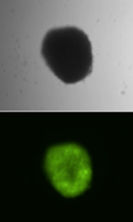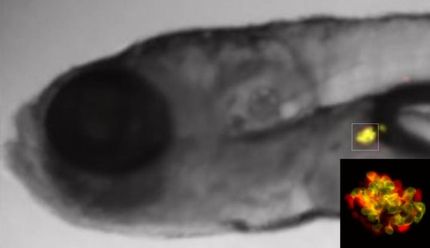New method increases supply of embryonic stem cells
Advertisement
A new method allows for large-scale generation of human embryonic stem cells of high clinical quality. It also allows for production of such cells without destroying any human embryos. The discovery is a big step forward for stem cell research and for the high hopes for replacing damaged cells and thereby curing serious illnesses such as diabetes and Parkinson's disease.
Currently human embryonic stem cells are made from surplus in vitro fertilized (IVF) embryos that are not used for the generation of pregnancies. The embryos do not survive the procedure. Therefore it has been illegal in the USA to to use this method for deriving embryonic stem cell lines. Sweden's legislation has been more permissive. It has been possible to generate embryonic stem cells from excess, early IVF embryos with the permission of the persons donating their eggs and sperm.
An international research team led by Karl Tryggvason, Professor of Medical Chemistry at Karolinska Institutet in Sweden and Professor at Duke-NUS Graduate Medical School in Singapore has, together with Professor Outi Hovatta at Karolinska Institutet, developed a method that makes it possible to use a single cell from an embryo of eight cells. This embryo can then be re-frozen and, theoretically, be placed in a woman's uterus. The method is already used in Pre-implantation Genetic Diagnosis (PGD) analyses, where a genetic test is carried out on a single cell of an IVF embryo in order to detect potential hereditary diseases. If mutations are are not detected, the embryo is inserted in the woman's uterus, where it can grow into a healthy child.
"We know that an embryo can survive the removal of a single cell. This makes a great ethical difference," says Karl Tryggvason.
The single stem cell is then cultivated on a bed of a human laminin protein known as LN-521 that is normally associated with pluripotent stem cells in the embryo. This allows the stem cell to duplicate and multiply without being contaminated. Previously the cultivation of stem cells has been done on proteins from animals or on human cells, which have contaminated the stem cells through uninhibited production of thousands of proteins.
"We can cultivate the stem cells in a chemically defined, clinical quality environment. This means that one can produce stem cells on a large scale, with the precision required for pharmaceutical production," says Karl Tryggvason.
Embryonic stem cells are pluripotent and can develop into any kind of cell. This means that they can become dopamine producing cells, insulin producing cells, heart muscle cells or eye cells, to name but a few of the hopes placed on cell therapy using stem cells.
"Using this technology the supply of human embryonic stem cells is no longer a problem. It will be possible to establish a bank where stem cells can be matched by tissue type, which is important for avoiding transplants being rejected," says Karl Tryggvason.



























































